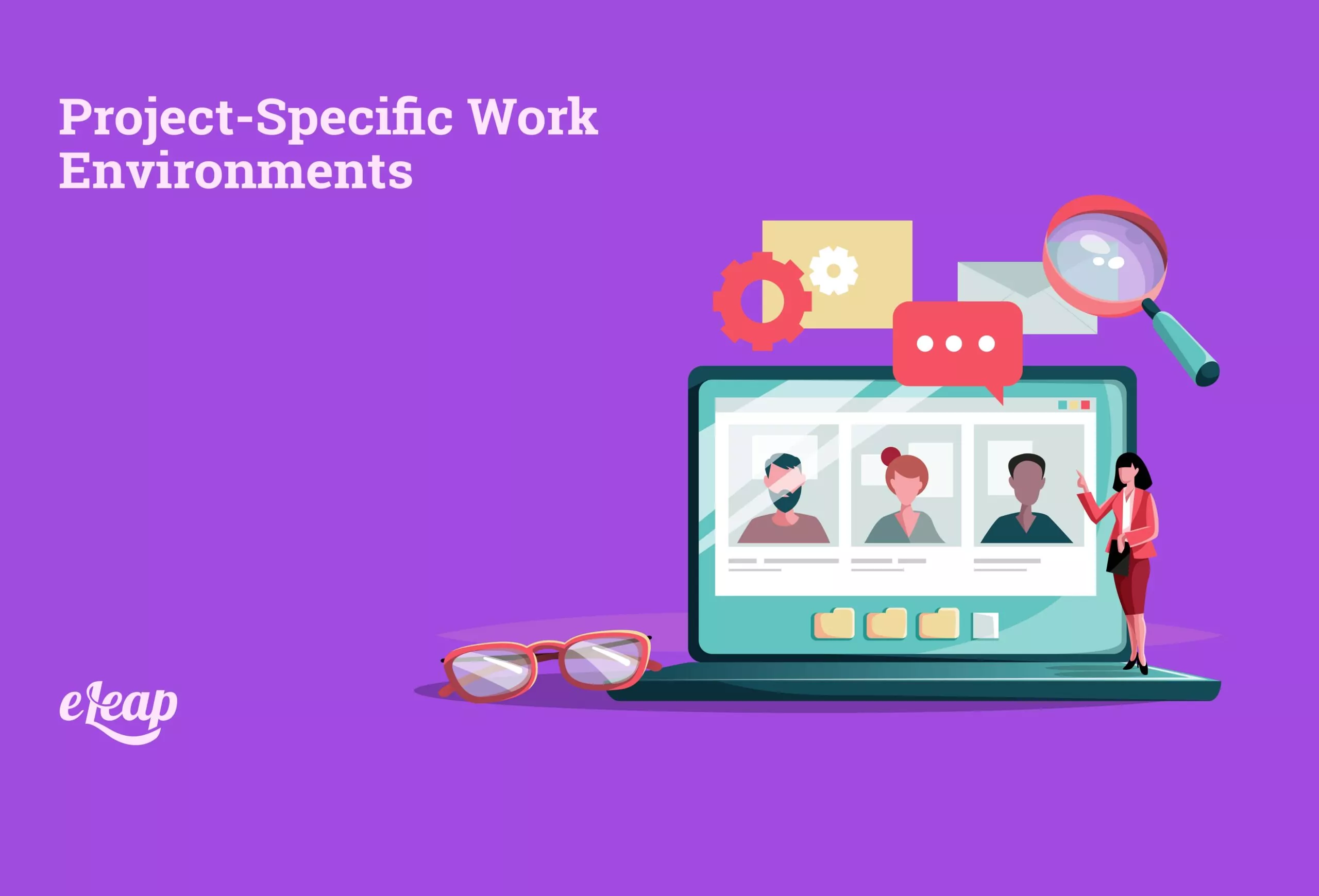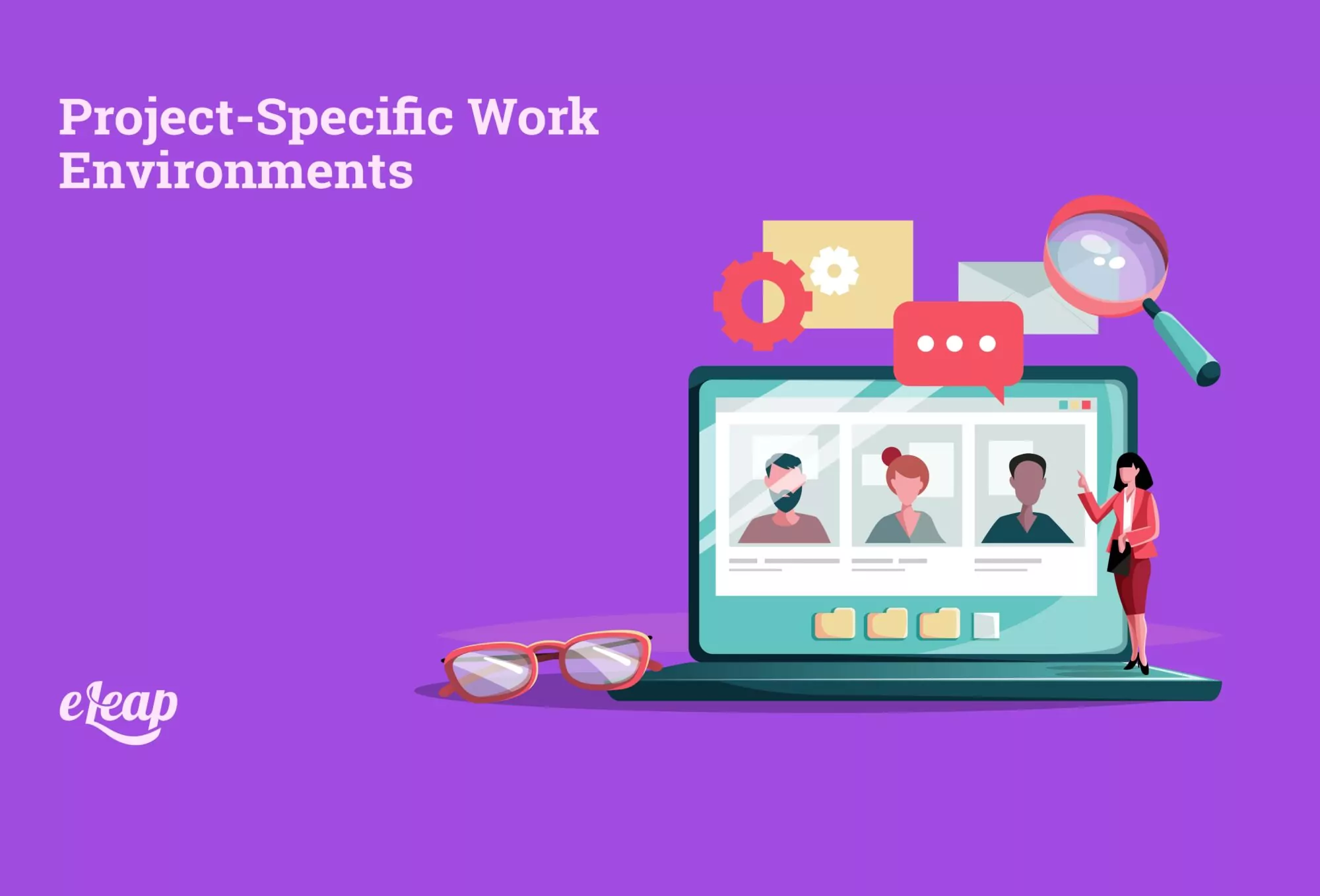Project-Specific Work Environments

Currently, many organizations are implementing a strategy that includes a project-based approach to work. This is an efficient approach, especially when considering the versatile set of skills within the new corporate hiring pool.
Options are slim, and companies are currently battling for the available talent, but using this strategy can pay dividends. It allows team members to be mobile, giving you the opportunity to place them on projects where they’ll be the most efficient.
This is possible because of the high level of talent and vast array of capabilities that these employees have. Organizations that are still using designated roles and positions could be making a huge mistake when it comes to the future of their organization.

What Is a Project-Specific Work Environment?
Employees are not limited to specific roles or departments in a project-based work environment. Instead, they are able to shift to different roles based on the needs of different projects. This allows companies to maximize their talent pool by using the employees’ versatile set of skills.
This also allows for fresh new perspectives, allowing team members to gain insights from peers they may not otherwise engage with within a normal environment. This is especially true when inter-departmental collaboration happens.
There are several benefits to moving to a project-based work environment. In the following section, you’ll learn about the advantages that this atmosphere can bring to your organization.
Benefits of a Project-Based Work Environment
These are the most significant benefits of using a project-based work environment.
Increased Productivity
When team members work in a project-based setting, the productivity rates go through the roof. There’s less downtime spent in front of the computer, watching the clock tick away.
This is wasted time and money for your organization, and it creates boredom for your workforce. When employees are constantly engaged in a project, this constantly keeps them busy.
In the end, this keeps your employees sharp corporation and doesn’t allow them to become disconnected from their work.
Fresh Perspectives
Your team members gain fresh perspectives when working in this environment. Collaboration between departments allows them to gain new insight into their position specifically.
It also allows them to learn new skills from team members in other departments, increasing their arsenal and improving their overall efficiency. Employees appreciate these types of opportunities, as the current corporate workforce thrives on learning and improving their performance.
Increased Flexibility
Employees have more flexibility in a project-based environment. This gives benefits to the employee and the organization.
If there’s an occasion where one team member needs to assist another team on a certain aspect of their project, they’re easily able to slip away and give a few hours of their time. Overall, this allows your organization to maximize the talent pool, allowing you to get increased production from a smaller number of employees.
Reduced Business Disruption
When projects are limited to designated timelines, a business may become disrupted if one project is extended and another must be shut down prematurely. This isn’t a problem for companies that implement a project-based work environment.
Employees can simply move to different roles or projects until they’re ready to return to their original role, or project once time has expired on the other. This is what creates versatility and leads to what’s known as corporate agility.
Several research reports and studies have shown that agility is a characteristic of many successful billion-dollar corporations.
Are you excited when you hear about the benefits of implementing a project-based work environment? You should be. However, these types of changes can’t take place on their own.
There are some potential roadblocks that exist to creating this environment. Consider the following challenges when switching to this type of workflow.
Roadblocks to Creating a Project-Based Environment
The following challenges could create difficulty if you’re looking to implement a project-based work strategy. Be mindful of which of these challenges may exist within your organization if this is something you’re considering.
Limited Collaboration Experience
If your organization has limited experience when it comes to collaboration, this can prove to be a challenge. It may be difficult when the majority of your employees are used to working on their own. Switching to a project-based environment may feel awkward or cause them to feel like they’re less efficient.
However, the good news is this is a challenge that’s easy to overcome.
Begin by conducting small team-building strategies. Hold meetings, and encourage team members to bounce ideas off one another. Slowly progress into assigning full projects, and eventually, you can grow your entire strategy into a project-based environment.
Remote Environment
Many organizations believe that having most of their employees work on a remote basis can create challenges in creating a project-based environment. However, this could actually prove to be a huge opportunity for transitioning into this environment if you play your cards right.
Having employees that work remotely already gives them an option for flexibility. They’re used to the freedom and room to be creative. This puts you a step ahead of the game.
If you incorporate Zoom and other video and chat-based group environments, you can easily pull off this type of corporate strategy. Experiment with a few small teams at first and see how it goes.
When you experience optimal results, you can expand on this strategy. You can use your performance management software to track results and implement small tweaks when needed.
Hold regular meetings with your remote teams to find out how things are going and if there’s anything you can do to improve their experience. Designate team leaders to head these groups and have them check in with you regularly.
Switching to a project-based environment doesn’t have to be mission impossible. If you’ve been thinking about this approach, start looking at it as a real possibility. Start engaging your team members about this idea, and prepare them for working in a more collaborative manner.
When you mention these changes, explain them to give employees advantages for their personal growth. Everybody wants to know what’s in it for them when you talk about change. Let them know that this isn’t just a benefit for the company but a benefit for them and their personal growth as well.
Use your performance management system to track productivity and analyze results before switching to this environment and after. Demonstrating positive results is always the best way to get everybody on board!